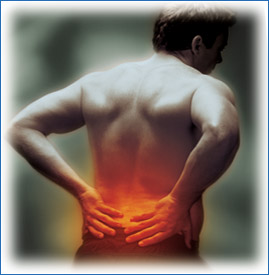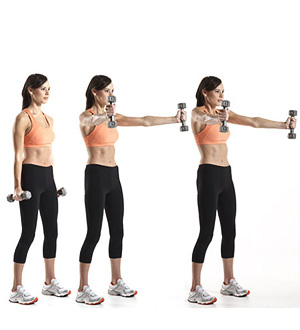Essential moves to relieve lower back pain
 Most of us will have low back pain at some point. Yet low back pain is one of the least understood conditions. It’s so misunderstood that surgeons, chiropractors, pain doctors and osteopaths often disagree on the reasons for most low back conditions.
Most of us will have low back pain at some point. Yet low back pain is one of the least understood conditions. It’s so misunderstood that surgeons, chiropractors, pain doctors and osteopaths often disagree on the reasons for most low back conditions.
Their disagreement can also cover treatment. While a back surgeon might suggest laminectomy surgery, a pain management specialist may suggest pharmaceutical muscle relaxers and pain medication. The chiropractor may suggest a series of spinal subuxation, while an osteopath might suggest manual torsion manipulation. To make the confusion worse, your fitness trainer might just suggest abdominal exercises.
So who is right?
As far as surgery goes, a number of studies by different agencies, including the U.S. Agency for Health Care Policy Research, has found that most low back surgeries are unnecessary. Numerous doctors have come out and stated that most disk related back surgeries, such as disk fusions, laminectomies and discectomies – the cutting away of the gelled disk material between the vertebrae – involve simply muscle, ligament, postural or structural related conditions.
Worse, the laminectomy – considered one of the more complicated forms of back surgery where parts of the vertebral bone or lamina are removed – is being performed dramatically more frequently than ever before. The Journal of the American Medical Association (April 2010) reported that laminectomies are now performed 15 times more today than in 2002.
Osteopathic manipulation performed by trained osteopathic doctors and osteopathic physical therapists was able to relieve a majority of the low back pain cases. These treatments, called manual torsion manipulations, utilize the patient’s own muscles to support and re-align a dysfunctional sacroiliac joint or symphysis pubis, or vertebral alignment.
The osteopathic clinic also had a disc decompression machine (VAX-D) that effectively lengthened and decompressed the spine and helped many patients.
A tilted pelvis, maligned sacroiliac joint or other imbalance in the pelvic girdle can strike anyone quite easily, but they often strike during their 40s and 50s, when there is plenty of activity and a weakening of musculature support.
There are two sacroiliac joints – one on each side of the lower back just above the hop and between the S1 and S5 vertebrae. The sacroiliac joints comprise the posterior (back) part of the pelvic girdle and join the pelvis to the sacrum.
Twisting while bending to pick something up, twisting while getting up or sitting down, or other twisting motions (better described as “wrenching”) can malign one or both of the two SI joints. Auto, ski, surf, skate or other physical activity accidents can also cause this. The tiny muscles and ligaments that keep the vertebrae, sacrum, pelvis and hips in place will weaken with age, poor posture, lack of (or imbalanced) exercise and a sedentary lifestyle in general.
The bottom front of the pelvis is joined together with the symphysis pubis. This joint can become maligned during pregnancy, childbirth and other pelvic impositions.
When the pelvic joints are maligned, they can make the pelvic girdle crooked. This will typically cause lower back pain and sometimes hip and groin pain. The pelvic dysfunction can also cause the SI vertebral discs to become imbalanced on one side or another, which can irritate the lower spinal nerves.
This irritation can radiate pain down the legs and buttocks, and eve to the toes. Pelvic dysfunction often causes lower back pain that is worse on one side, and worse after sleeping, standing or sitting in one position for very long.
Pelvic dysfunction can also result in what is called a functional leg length difference. To find if you have a functional leg length difference, just measure your legs from hips to heels when standing, and measure again when sitting. If they are different when either sitting or standing, there is a functional leg length difference and likely a malignment of the sacroiliac joints.
If the pain is manageable or sporadic, exercise and careful self-manipulation, over time, may help strengthen the muscles and ligaments that support the vertebral ligaments, back muscle sna joints of the pelvis. These can help keep the pelvis joints in place.
FOR THE BEST FIT TRY ON NEW ATHLETIC SHOES AT THE BEGINNING OF THE DAY. Feet swell during the course of a day, so shop when your feet are at their largest and be sure to wear the socks you will wear for working out when you try on the shoes. Stand in the shoe: walk around the shop, wiggle your toes. Shoes should never hurt; if they do that pair is not right for you. The new shoes may feel great in the store when you try them on on a Saturday morning, but if you put them on to run later in the day and they hurt, take them back and get a larger size. Most feet do get longer and wider with age, so if you have not had your size checked for a few years, do it now.
PAY ATTENTION TO THE ROTATOR CUFF. Many people injure their rotator cuff and this puts a serious crimp into their training. Fortunately training can alleviate the rotator cuff issue as well. There is a variety of exercises that can strengthen this region of the shoulder.

One of these is the “iron crucifix” in which a pair of dumbbells is raised up with the arms straight out to the side, elbows locked. Hold this position for a few seconds, and then slowly lower the weight back down. Use a light pair of dumbbells, as the aim here isn’t to use heavy weight, but to target the rotator cuff.

